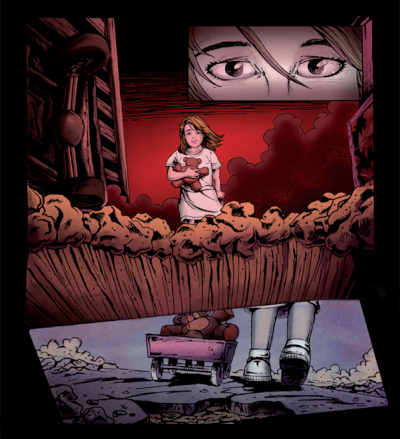 In the dark light of a cluttered room, surrounded by stacks of sketchpads and half-finished sketches, the spark of creation flickers like the neon glow of a city skyline at dusk. It’s a passion that boils in the veins, a relentless urge to breathe life into ink and paper. Each panel is a heartbeat, every dialogue a pulse, telling stories that dart and weave through the imagination like superhéroes, héroes, stories soaring through a kaleidoscope of worlds. Here, in this sanctuary of creativity, ideas collide with inspiration, forging characters that leap off the page and adventures that beckon readers to turn the page, hungry for more. The thrill of comic book creation isn’t just about the art; it’s about capturing the essence of what it means to dream, to struggle, and to triumph—all with a splash of color and a healthy dose of humor.
In the dark light of a cluttered room, surrounded by stacks of sketchpads and half-finished sketches, the spark of creation flickers like the neon glow of a city skyline at dusk. It’s a passion that boils in the veins, a relentless urge to breathe life into ink and paper. Each panel is a heartbeat, every dialogue a pulse, telling stories that dart and weave through the imagination like superhéroes, héroes, stories soaring through a kaleidoscope of worlds. Here, in this sanctuary of creativity, ideas collide with inspiration, forging characters that leap off the page and adventures that beckon readers to turn the page, hungry for more. The thrill of comic book creation isn’t just about the art; it’s about capturing the essence of what it means to dream, to struggle, and to triumph—all with a splash of color and a healthy dose of humor.
That introduction reminds me of Will Eisner, who created one of the most interesting books about making comics when Poorhouse Press published Comics and Sequential Art in 1985. In every single chapter, Eisner covers different topics and includes some of his own vision to provide examples that are very helpful to new creators. His guide defines comics as a form of reading and describes how the medium juxtaposes words and images, how panel structure plays with time, and the forms sequential art can take. It’s a book that is really important to check out so you can understand these first steps in your personal creation.
Panel to panel, I identified and understood some important topics that all new creators must keep in mind in the moment to create a new comic book:
- Character Development: Characters are the lifeblood of any comic book, driving the narrative forward and captivating readers with their personalities, motivations, and relationships. They must be distinct and memorable, with traits that resonate with the audience.
- Visual Style: This involves determining the artistic approach, such as the use of color palettes, line work, and panel layouts, to evoke the desired mood and enhance the storytelling.
- Scriptwriting: At the heart of every comic book lies the script, a detailed written document that outlines the dialogue, narration, and actions of each panel and page. In a full script, the writer provides detailed descriptions of each panel, including dialogue, narration, and visual cues. The scriptwriting requires careful attention to pacing, characterization, and dialogue, ensuring that the story unfolds in a compelling and engaging manner.
- Environment and Background Design: These play a crucial role in setting the scene and establishing the mood of the story. Environment and background design involves creating detailed and immersive settings that enhance the narrative and provide context for the action. Artists must consider factors such as architecture, landscape, lighting, and atmosphere to create believable and visually stunning environments.
- Proofreading and Revision: Once the lettering is complete, the final step is proofreading and revision, to ensure accuracy, clarity, and consistency. Creators carefully review the text for spelling errors, grammatical mistakes, and formatting inconsistencies. It’s essential to pay attention to detail during this stage, as even minor errors can detract from the reader’s immersion in the story.
I also want to recommend this Facebook group of creators called Indie Comic Source, a group with thousands of members. It offers the opportunity to interact with fellow creators, and that’s something even the most independent writers and artists need if they want to turn a passion into a profession.
In conclusion, the passion to create comic books is a powerful force that transcends mere ink and paper; it’s a celebration of storytelling, artistry, and connection. Each panel is a window into new worlds, where heroes rise, villains fall, and every turn of the page sparks the imagination. For creators, it’s a journey that requires not just talent, but an unwavering dedication to conveying emotions and experiences that resonate with readers. The thrill of bringing characters to life, crafting intricate plots, and exploring the limitless potential of the medium fuels our desire to inspire, entertain, and challenge perspectives. It is in the vibrant colors, dynamic lines, and compelling narratives that we find our voices, and in the hands of our readers, we discover the true magic of comic books: the ability to forge connections that linger long after the last page is turned. As we continue to nurture this passion, we pave the way for future generations of creators and fans, ensuring that the art of comics storytelling remains alive and vibrant for years to come.
